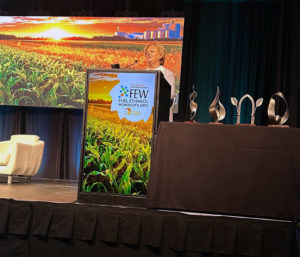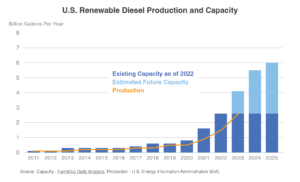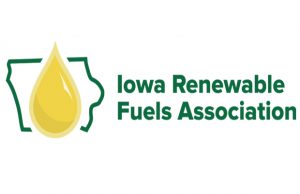
Jeanne McCaherty, Guardian Energy, received Women in Ethanol award
Jeanne McCaherty, CEO of Guardian Energy Management and former Renewable Fuels Association chair, was recognized with this year’s Women in Ethanol Award (WIE) at the
International Fuel Ethanol Workshop & Expo (FEW) Tuesday.
McCaherty was awarded this honor during the second annual award ceremony. Ethanol Producer Magazine recognized women within the ethanol industry and highlighted the crucial role women play in the growth and success of the ethanol industry. The award ceremony celebrated all women who have made significant contributions to the industry, whether it be through scientific research, business leadership, or advocacy efforts.
In addition to McCaherty, David Zimmerman, CEO of Big River Resources, LLC, and Mark Yancey, CTO of D3MAX and SAFFiRE Renewables, LLC, were recognized at the 40th annual FEW being held in Minneapolis this week.
Zimmerman received the 2024 High Octane Award for his leadership, integrity, and passion for the biofuels industry. Zimmerman has led the company to achieving financial goals, prioritizing a safe work environment, and guiding the industry’s trade organization. Along with being CEO, he is a current board member of Growth Energy, Renewable Fuels Association, Iowa Renewable Fuels Association, Illinois Renewable Fuels Association, and Wisconsin Renewable Fuels Association.
Yancey was awarded the 2024 Award of Excellence for contributions to the industry through research, technical advisory, and development activities. Yancey has over 30 years of experience in the ethanol industry including project development, technology commercialization, and has assisted in developing seven bioenergy plants. His current responsibilities include the development and design of the D3MAX process and licensing the D3MAX technology to customers. The first commercial D3MAX plant is in operation at Ace Ethanol in Stanley, Wisconsin.
Other honors presented Tuesday at FEW include the 2024 recipients of the Kathy Bryan Memorial Scholarship, Cali Gutz and Peyton Graves. Cali will be attending the University of Nebraska-Lincoln and Peyton will be attending Purdue University–West Lafayette this fall. In addition, former BBI owner Mike Bryan received the 2024 Distinguished Service Award for his advocacy, leadership, and commitment to ethanol production worldwide.
Renewable Fuels Association President and CEO congratulated all of this year’s honorees, in particular Zimmerman and McCaherty who serve on the RFA board.
“RFA is thrilled to see David Zimmerman and Jeanne McCaherty being recognized for their invaluable contributions to the U.S. ethanol industry,” said RFA President and CEO Geoff Cooper. “Our association—and the entire ethanol industry—is lucky to have such thoughtful and passionate leaders in our midst. The industry as we know it today simply would not exist without the vision and dedication of people like Jeanne and David. We congratulate them on their well-deserved awards and look forward to celebrating their achievements today at the FEW.”
The 40th annual FEW began on Monday, June 10, and will run through Wednesday, June 12 at the Minneapolis Convention Center.
 The Renewable Fuels Association and National Farmers Union have filed a lawsuit against the U.S. Environmental Protection Agency in the D.C. Circuit Court of Appeals challenging recently finalized light- and medium-duty vehicle emissions standards.
The Renewable Fuels Association and National Farmers Union have filed a lawsuit against the U.S. Environmental Protection Agency in the D.C. Circuit Court of Appeals challenging recently finalized light- and medium-duty vehicle emissions standards.









